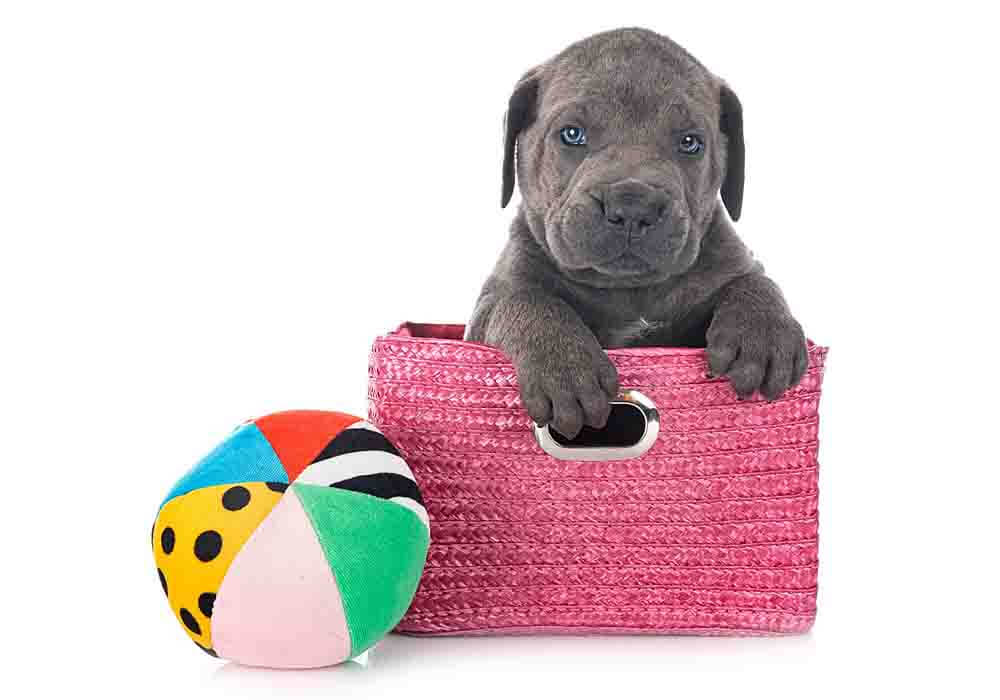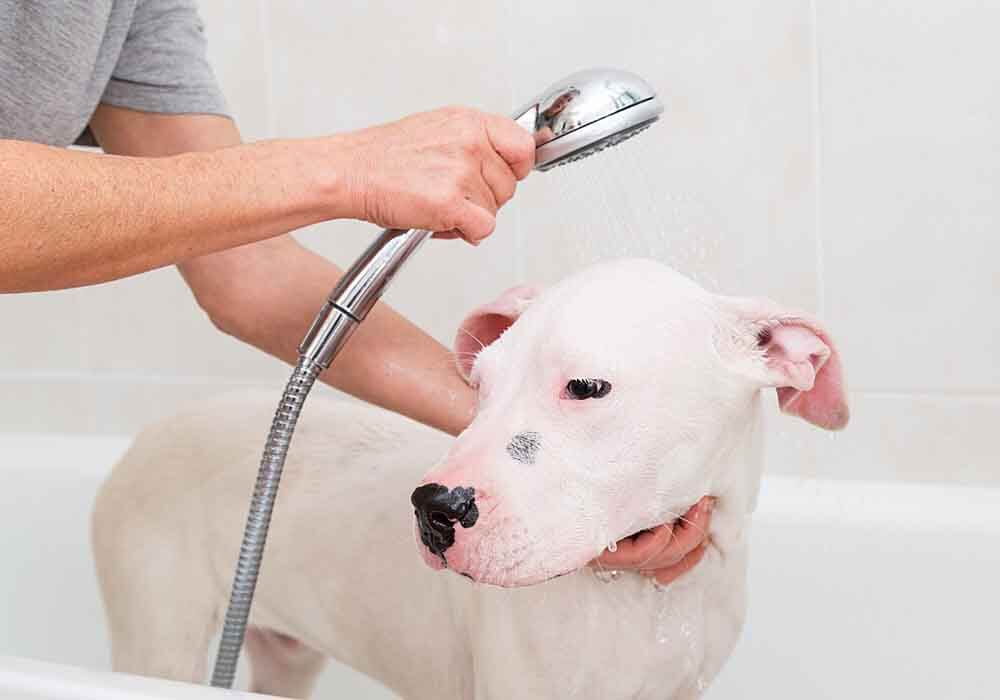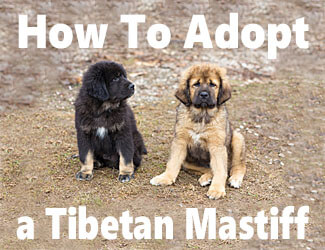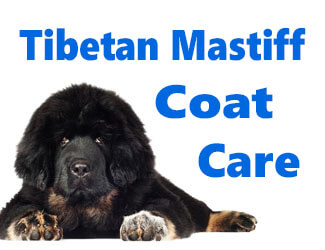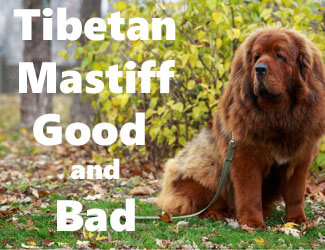Tibetan
Mastiff Grooming
Bathing, Coat, Teeth, Ears & Nails
We cover it all from nose to toes
by Ken Alden
Tibetan Mastiffs are some of the largest dogs in
the world. They weigh up to 160 pounds, and they can be as tall as 30 inches or
more. And despite their size, they’re fairly friendly when they’re playing with
their owners. However, grooming such a big animal can be a bit of a challenge.
Tibetan Mastiff Grooming Tips...
- Make sure you use dog-specific shampoo and conditioner when bathing your pup.
- Brush their fur two to three times a week and their teeth just as often, you can promote a healthy lifestyle for your Tibetan Mastiff.
- Don’t clean their ears regularly. Only do it when needed.
- Use the proper technique when brushing their teeth.
Throughout this article, you’ll also learn the following information:
- How to properly bathe your dog
- Tips to clean their ears tibetan mastiff grooming
- Nail trimming suggestions
- Multiple products that will help
Pro-tip: Ever try lifting a Tibetan Mastiff? Their weight can hurt not only your back but their joints when they hop down from cars, sofas or even your bed. To protect your back and theirs check out the best Mastiff ramps on Amazon.com now.
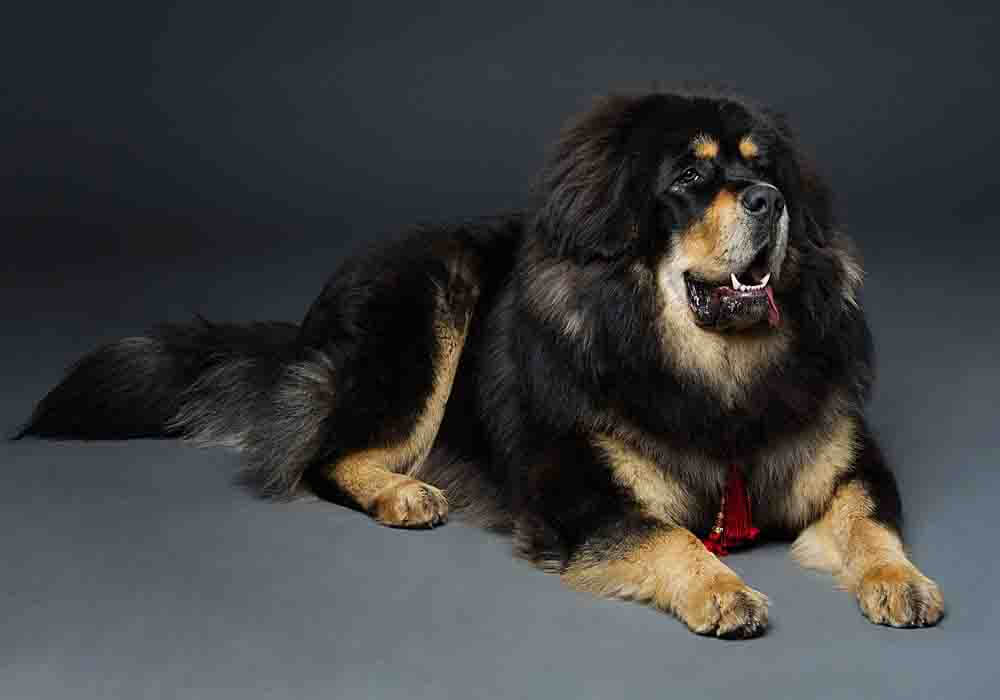
How To Bathe A Tibetan Mastiff
When it comes to Tibetan Mastiff grooming, bathing one is a huge task to take on. You can’t plan a 10-minute slot as you could with a small dog. Instead, you might want to set aside a few hours. From start to finish, you have to bathe their thick coat and then dry them off. Since it’s so dense, drying them off can take quite some time.
Don’t worry, though; You can follow these steps to bathe your Tibetan Mastiff quickly:
- Get your dog to jump into the bathtub, shower, or patio if you’re
using a hose. Spray them down thoroughly, ensuring to get
the water deep into their coat. You might want to use your hands to move their
fur aside in patches to get every last bit. If you only get the outside, their
skin could dry, itch, and flake.
- Once you’ve soaked their fur, it’s time to use a shampoo product. Healthy Breeds sells a shampoo made
specifically for Tibetan Mastiffs. This shampoo comes in a Vanilla Bean scent that lasts for days on end. You can also try out their Tearless Shampoo for young Tibetan Mastiff
puppies, both from Amazon.
- Scrub the shampoo into their fur with rubber gloves. Using your hands to make suds throughout their coat, make sure
that you lightly scrub their skin. It’s important that you get a deep clean
every time so they don’t go too long without being washed all the way. Skin
infections can develop if it’s neglected.
- Wash off the shampoo with water.
Again, this step might take some time. As mentioned a few times in this post
already, Tibetan Mastiffs have thick fur, so the shampoo will be hard to get
out. Don’t be afraid to spray the hose or showerhead closely to their fur, as
long as it’s not too pressurized.
- Now it’s time to move onto the conditioner. Your dog will already be soaked, so there’s no need to worry
about reusing the hose or showerhead. Scrub them with the conditioner and cover
their entire coat. Unlike shampoo, conditioner only needs to go on their fur,
not their skin. Green Groom Complete Dog Coat Conditioner (avaiable from Amazon) is a good choice for Tibetan Mastiffs.
6. After waiting a few minutes for the conditioner to soak in, perform a final rinse. Again, this step is probably going to take a while. Allot 10 minutes or so to remove all of the soap. There shouldn’t be any bubbles left
behind otherwise, it could try out their skin.
7. Grab a few towels to dry them off. You won’t be able to use just one towel for the job. They’re going to soak it with their wet, dense fur coat. You could also set up a fan in the room or outside to assist you in the process.
To get them completely dry, you’re probably going to have to spend 10 or 15
minutes toweling them dry.
Pro-tip: Tibetan Mastiff anxiety, aggression, destructive chewing, jumping up, fearfulness, and other behaviors can be controlled with the right training program.
Here’s a great course that addresses these issues along with many other dog training basics: Check it out now!
Cleaning Your Mastiffs Ears
Unlike bathing a Tibetan Mastiff, you don’t need to clean their ears on a scheduled routine. You should only clean them if they show signs that need fixing. Ear wax is actually healthy in normal amounts because it helps to remove and prevent bacteria from entering the ear. Since they naturally drain by themselves, you don’t have to clean them all the time which is great when it comes to Tibetan Mastiff grooming.
However, keep an eye out for the following signs once a week:
- Excessive wax buildup that looks brown, black, or yellow.
- Discoloration in the color of the ear’s skin.
- Foul odors, whether it’s severe or mild, should be taken care of.
- Crusty, crunchy, slimy, or sticky substances in their ears.
- Fleas, mites, and other bugs are also a problem.
- Constant head shaking to remove water and itchiness.
- Ear scratching more than usual.
- Redness or an inflamed ear.
- A yeasty smell that doesn’t go away.
- Obvious signs of pain or discomfort from your dog.
When you’re ready to clean your dog’s ear, you’ll need a towel, ear cleaning solutions, and cotton balls. Also, try to start the process when your Tibetan Mastiff is relaxed and tired to prevent them from jumping up or being energetic.
Here’s a quick step-by-step process to clean your Tibetan Mastiff’s ears:
- Squirt the ear cleaning solution into your dog’s ear. You’ll need to move it around to make sure that most of their ear is coated. Usually, only a few drops are needed per ear. You might have to reapply more of the solution if they have a heavy buildup of wax or discoloration. Vet Organics sells a good ear cleaning solution for your dog. It's available from Amazon.
- Using a cotton ball, softly brush the wax and the rest of their ear. Use circular motions to prevent scratching and abrasions. Their ears are prone to infections if they get cut, especially since moisture gets trapped from all of their thick fur. Don’t reuse dirty cotton balls or you’ll spread more bacteria.
- Repeat steps #1 and #2 as many times as needed. There’s no need to hold back; Just make sure you don’t rub their skin away. Their ears are soft, so you should be gentle throughout the process. If you cause harm, they might be worried about letting you clean their ears again.
- Take a dry, clean towel and blot it against the inside of your dog’s ears. Again, be very gentle when you dry off their ears. Be sure that the towel is super soft and non-abrasive. Feel free to use a microfiber towel if you don’t want to risk using a regular cotton towel or rag.
That’s all there is to it! Cleanliness, dryness,
and a thorough application of the right kind of drops will keep your dog’s ears
clean for a long time. Many pet owners forget about the importance of ear
maintenance, but ear infections aren’t something to be underestimated. Lack of
proper care can cause severe pain, discharge, and a need for expensive
medication.
Caring For Your Tibetan Mastiffs Coat
Tibetan Mastiffs require more of a coat care
routine than the average dog breed. Their hair can be short, but it’s usually a
couple of inches long. The length and multiple layers make it quite challenging
to deal with. Luckily, there are several signs and suggestions that can take the
weight off of your shoulders.
Routine Brushing
For starters, you should regularly brush your Tibetan Mastiff. They’re going to shed all over the place if you don’t stay on top of their coat. They come from a cold climate, which means they have several layers to keep them warm. If you live in an area that’s not cold, their body will adapt by shedding.
You can combat the shedding by brushing them two
times a week. In the spring and summer, you might have to increase the brushing
frequency to three times per week, but rarely anything more than that. You also
have to come to terms with the fact that you’re definitely going to have to
sweep their hair off the floor, regardless of how much brushing you do which is one of the downsides of Tibetan Mastiff grooming.
Signs and Symptoms
When it comes to Tibetan mastiff grooming, if you don’t brush your dog’s coat or maintain it as you should, then there are going to be a handful of problems that could arise. For example, they might develop dandruff and flaky skin. The dead skin builds up and causes itchiness that your Tibetan Mastiff will scratch and bite at, which could lead to cuts and sores. tibetan mastiff grooming
Another symptom of not enough brushing is clumps
of dead fur that forms on their coat. If you notice that you can pull their fur
right off of their coat without much effort, then you’re not brushing them
enough. If they shake and hair flies everywhere, that’s another sign that you
need to increase your brushing habits for your dog.
Food & Supplements for a Healthy Coat
Adding a mixture of healthy food and various supplements into your dog’s diet could help to improve the condition of their coat. If they have a dull, stale, crusty looking coat, then you might want to consider adding something into their portions. For example, Omega-3 fatty acids are known to add a nice shine to a dog’s coat.
You could either give them sardines once per
week so they can get it directly from the source, or consider adding fish oil
supplements to their diet
regularly. Fish oil will add the same amount of Omega-3 fatty acids as
sardines, but it doesn’t add any extra calories. You could also try a fish oil
in liquid form for your Tibetan
Mastiff. Both suppliments are avaiable from Amazon.

Because BIG dogs have BIG coats, we felt this topic deserved it's own page with more in depth coverage. So be sure to fetch and read this page of ours on Tibetan Mastiff coat care.
Cleaning Your Tibetan Mastiffs Teeth
Tibetan Mastiffs have large, sharp teeth. They can look quite ferocious, but they’re actually very friendly dogs if they’ve been raised properly. Cleaning your Mastiff’s teeth can be a challenge if they’re trying to play, or if they’re not familiar or comfortable with the operation. Try to calm them down before you start brushing their teeth.
There are three products that you need to maintain good oral hygiene for your dog:
- A dog toothbrush, H&H Pets Finger Brushes from Amazon are the best.
- Dog toothpaste, Radius USDA from Amazon makes a fantastic product.
- Dental chews, Pedigree Dentastix from Amazon are the most popular brand.
Once you’ve gathered everything you need, it’s time to start brushing away. Don’t rush into it, though; Your dog needs time to understand that they’re not playing with you. They need to remain calm, which could take some time. Also, use finger brushes rather than a traditional toothbrush so you can get a better angle on each tooth.
Here are a few tips for cleaning your Tibetan Mastiff’s teeth:
- Start near the back and slowly work your way forward. If your dog becomes impatient and walks away, it’s important that you at least took care of the hard-to-reach areas in the back of their mouth. These areas tend to harbor more plaque and bacteria than the front teeth.
- Work in circular motions to prevent abrasions or weak spots on their enamel. Vigorous scrubbing can be bad for their teeth, so be gentle. As long as you maintain a regular schedule, you shouldn’t have to worry about chipping away at hard tartar.
- Don’t use too much toothpaste. A small amount goes a long way, and you don’t want your dog swallowing large amounts of it, either. The toothbrush is much more effective against bacteria than toothpaste, though it doesn’t hurt to let your dog have good breath for once!
- Give them a dental chew once a day so they can clean their own teeth. Nobody expects a Tibetan Mastiff to brush their teeth every morning and night, but dental chews can let them brush away bacteria while eating a delicious treat. Most dental chews also come with a pleasant mint smell, as well.
- Don’t reuse the finger brushes too often. Unlike toothbrushes, they can’t be reused for months in a row.
They have short, loose bristles that quickly become brittle and weak. On top of
that, dog’s mouths have tons of bacteria that gets left on the brush, even
after you wash it off.
Pro-tip: Tibetan Mastiff's (and their owners) love dog crates…and for good reasons. Crates keep dogs from mischief while you're away, are perfect for house training, for traveling by car, and provide the dog a place to de-stress. Check out the best Mastiff crates on Amazon.com now.
Trimming Your Tibetan Mastiffs Nails
Along with a fluffy, dense coat and large teeth, Tibetan Mastiffs have big feet and nails. Maintaining a healthy nail length can prevent your house from getting scratched, but it can also keep your dog from experiencing pain. When their nails are too long, even a single step can cause them pain.
It’s important to regularly trim their nails as
they grow longer. You can use files, mechanical grinders, or classic nail
clippers for dogs. All of these tools are useful, and they each have pros and
cons. You can try all three to see which one works best for you and your dog
before you develop a routine.
Manual Nail Files
Manual files are great for maintaining a short nail length for your dog in between sessions. The Coastal Pet Nail File (from Amazon) is a great choice for those who want something that’s budget-friendly and effective. All you have to do is hold the file firmly against your dog’s nail and slowly go back and forth across the surface.
Electric Nail Files
Dremel has a cordless pet nail filer that you
can check out
here. It’s designed to use multiple different sizes,
so you can choose the one that fits your Tibetan Mastiff. Spread their toes
apart by lightly pushing on the center of their knuckles. This will allow you
to use the Dremel filer to grind away at each nail.
Dog Nail Clippers
Perhaps the least expensive and quickest way to cut your dog’s nails is with traditional dog nail clippers. They have blades on each size to slice right through the nail. When you’re using them, make sure you hold them at a 45-degree angle to prevent the quick from getting hurt. The quick is the blood supply to your dog’s nail, and it’s either pink or grey, depending on their nail color.
The biggest concern that most dog owners seem to have when they’re trimming their pet’s nails is causing harm. The quick can bleed quite a bit if it’s cut. Fortunately, you can usually see where it is.
When a dog has dark nails, you shouldn’t grind
or clip beyond the gray portion. When their nails are white or light, you can
stop at the part that starts to turn pink. Again, always clip or grind at a
45-degree angle to prevent excess removal of their nail. This angle also helps
to preserve the effectiveness of their nails.
Tibetan Mastiff Grooming...Final Thoughts
Tibetan Mastiffs are loving, affection, and loyal dogs. They’re quite large, and their grooming needs are relatively demanding compared to other breeds. However, if you follow the steps, suggestions, and product recommendations found throughout this article, you’ll be right on track to keeping them healthy and happy.
Here’s a quick rundown of what you should’ve learned from this post:
- Scrub your dog’s fur with shampoo and conditioner, ensuring that you get their coat as well as their skin.
- Use a brush twice a week to remove excess hair to prevent shedding.
- Brush their teeth every night with finger brushes and toothpaste.
- Fish oil supplements and treats are great for their coat’s health.
- Use grinders, filers, or clippers to trim their nails.

About the Author...
Ken Alden, a dedicated Mastiff owner for over eight years, is acclaimed for his expertise in care, grooming, and training. Read more About Me and my dog Shadow.
- Mastiff Guide Home ›
- Tibetan Mastiff Info ›
- Tibetan Mastiff Grooming

